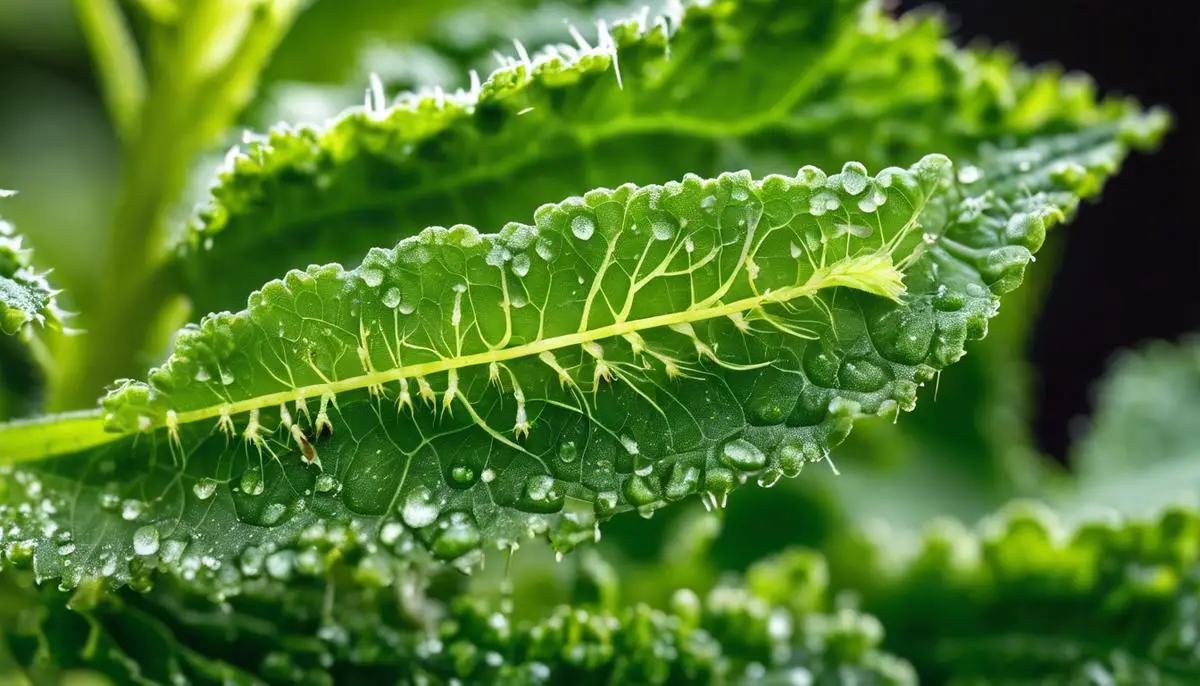Kale, a hardy and nutritious leafy green, is a mainstay in gardens and farms across the country. However, like any crop, it faces its share of foes in the form of pests and diseases. One of the most pervasive challenges is the aphid infestation, tiny sap-suckers that can decimate a kale crop if left unchecked. The biology and behavior of aphids, coupled with their interaction with kale, create a unique set of challenges that demand a multifaceted approach to management. Moving from insects to invaders of another kind, cabbage worms pose their threat to kale, necessitating vigilance and strategic intervention to protect these verdant leaves. Moreover, the stealthy creep of fungal diseases can catch any gardener off guard, potentially ruining a season’s hard work. This essay seeks to arm growers with knowledge about these common problems and tools for their control, exploring the biological underpinnings and effective strategies to safeguard their kale crops. It’s not just the threats above ground that concern kale cultivators; soil health and rotation practices below the surface are critical to sustainable growth and disease prevention, providing the foundation for a thriving garden.
Aphid Infestation in Kale
Aphids, belonging to the Aphidoidea superfamily, are one of the prime insect pests afflicting Brassica oleracea var. sabellica, commonly known as kale. These small, sap-sucking insects have specialized mouthparts evolved for extracting plant fluids, specifically phloem sap. The feeding habits of aphids on kale result in a myriad of deleterious effects, from wilting and distortion of foliage to the potential transmission of plant viruses. In addition, aphids can contribute to the development of sooty mold, a fungal ailment that results from the excretion of honeydew on which the mold thrives. This blackens the leaf surface and can inhibit photosynthesis, the crucial process of converting sunlight into chemical energy, thus potentially stunting plant growth and reducing crop yields.
Reader Poll: What online courses would interest you?
Effective aphid management on kale plants embraces an integrated approach that seeks to minimize aphid populations while preserving ecological balance. Cultural control practices include regular monitoring of plants for early detection and the elimination of aphid-colonized plant debris to prevent overwintering and population buildup. The introduction of beneficial insects, such as lady beetles (Coccinellidae), lacewings (Chrysopidae), and parasitic wasps (Aphidiinae), exemplifies biological control; these predators and parasitoids are natural enemies of aphids and can significantly reduce their numbers. For more severe infestations, various insecticidal soaps and horticultural oils provide a measure of chemical control. They are particularly advantageous due to their minimal impact on beneficial insects and the environment, however, their application necessitates direct contact with aphids and may require multiple treatments. Despite the availability of synthetic pesticides, their use is typically discouraged unless other methods have failed, as they may disrupt ecosystem equilibrium and lead to resistance development in target aphid populations.
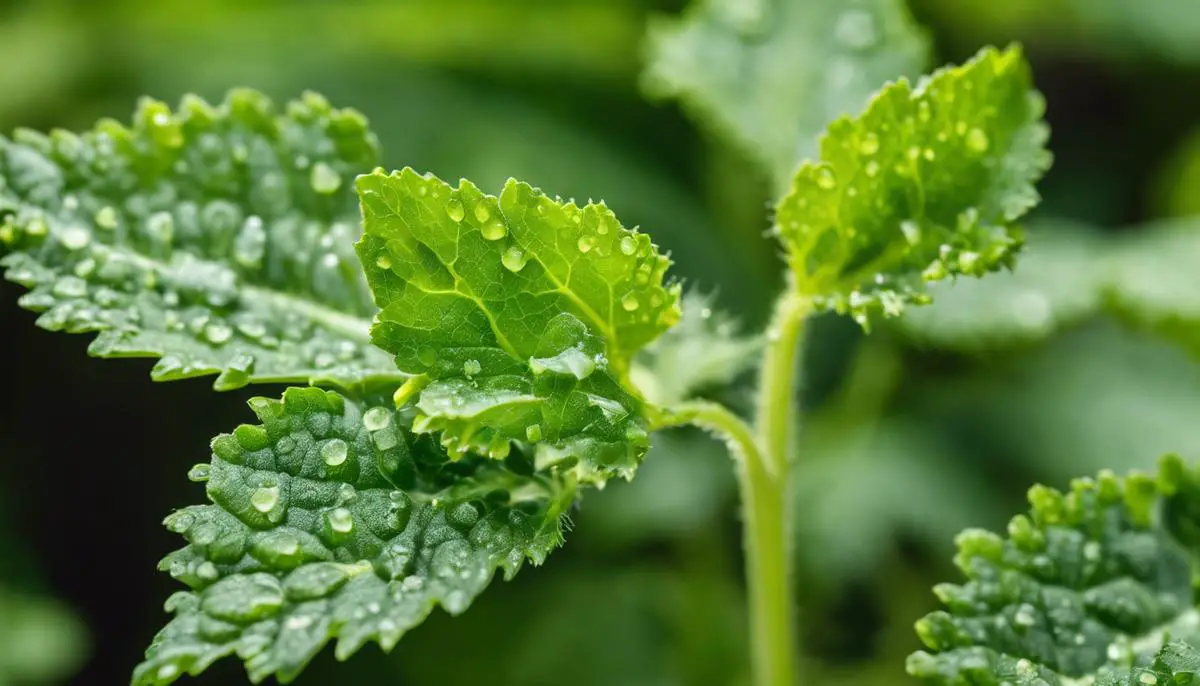
Cabbage Worm Management
In the diligent pursuit of agricultural excellence, the topic of cabbage worms, primarily caused by the larvae of Pieris rapae, the cabbage white butterfly, demands equal scholarly attention when cultivating kale. These voracious caterpillars pose a significant threat, not dissimilar in impact to their aphid counterparts. They methodically eat through foliage, leaving behind tattered remains and compromising the photosynthetic efficiency of the plant. Fabricating a robust, research-backed strategy to manage cabbage worm infestations is critical for ensuring the vitality and yield of kale crops.
Commencing with preemptive measures, employing floating row covers is a highly recommended practice. These lightweight fabrics serve as a physical barrier, effectively preventing adult butterflies from ovipositing on the plants. Their use synergistically aligns with integrated pest management protocols. Furthermore, initiating a regimen of careful monitoring is essential. Visual inspections, focusing on the undersides of leaves where eggs are typically laid, can significantly advance early detection and curb the lifecycle of these pests. Handpicking of larvae, although labor-intensive, is an organic method favored for smaller kale cultivations. It is also imperative that growers encourage the flourishing of natural predator populations. Insects such as wasps, ground beetles, and birds are indispensable allies in the ecological management of cabbage worms. Cultivating a biodiverse ecosystem that supports these beneficial organisms can reduce reliance on interventions with more destructive environmental footprints.
Subscribe to our newsletter!
Should an infestation escalate beyond the control of these initial practices, biological pesticides such as Bacillus thuringiensis var. kurstaki (Bt-k) are endorsed for more demanding intervention. This microbial insecticide, specifically targeting lepidopteran larvae, offers a targeted approach that spares non-target organisms and preserves the ecological integrity of the agricultural milieu. Research has consistently validated the efficacy and environmental soundness of Bt-k, encouraging its adoption in kale cultivation over broad-spectrum, synthetic alternatives. Ensuring proper timing and application rates are crucial for maximum efficacy of Bt-k treatments, and should be meticulously guided by current scientific findings and recommendations. Through the judicious integration of these practices, kale can be cultivated with a minimized burden of cabbage worm infestations, safeguarding both the crop yield and the encompassing ecosystem.
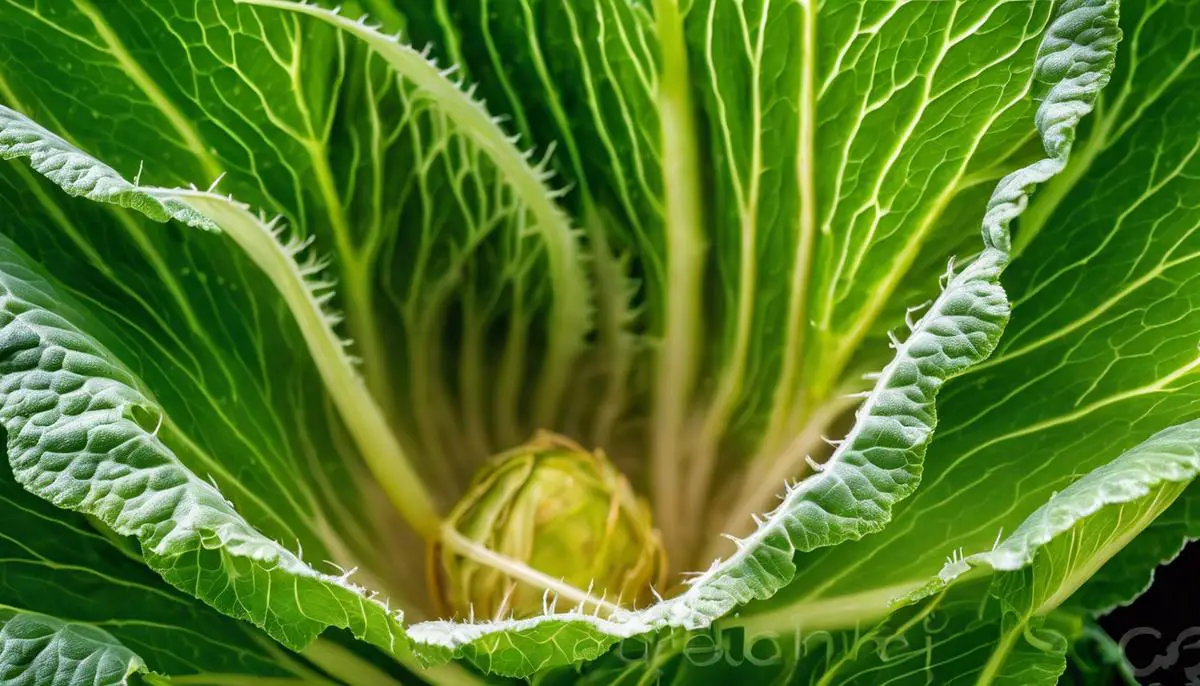
Fungal Diseases Affecting Kale
Turning our attention to fungal pathogens, kale is notably susceptible to downy mildew caused by the oomycete Hyaloperonospora parasitica and alternaria leaf spot, incited by the fungus Alternaria spp. Downy mildew presents as yellow patches on the upper surface of leaves and a fluffy, grayish-white mold on the undersides, often in humid conditions. Alternaria leaf spot reveals itself through concentric rings on leaf spots, which can coalesce leading to significant tissue necrosis.
To manage these pathogens, one must adopt a multifaceted strategy. Crop rotation is imperative; it disrupts the life cycles of these fungi, as they can lurk in soil or plant debris. Choosing resistant kale varieties, when available, provides an inherent defense against these diseases. Timely application of fungicides, especially those with a biocontrol origin like Bacillus subtilis or copper-based compounds, could act preemptively to protect crops in areas known to have high fungal pressure. However, caution is advised as overuse can lead to resistance development in the pathogen population. Cultural practices, such as ensuring proper spacing between plants to promote air circulation, and keeping fields free of weeds and debris that may harbor pathogens, are equally essential. Fungicide applications, if necessary, should be carefully timed according to the pathogen’s life cycle and environmental conditions that may favor outbreaks.
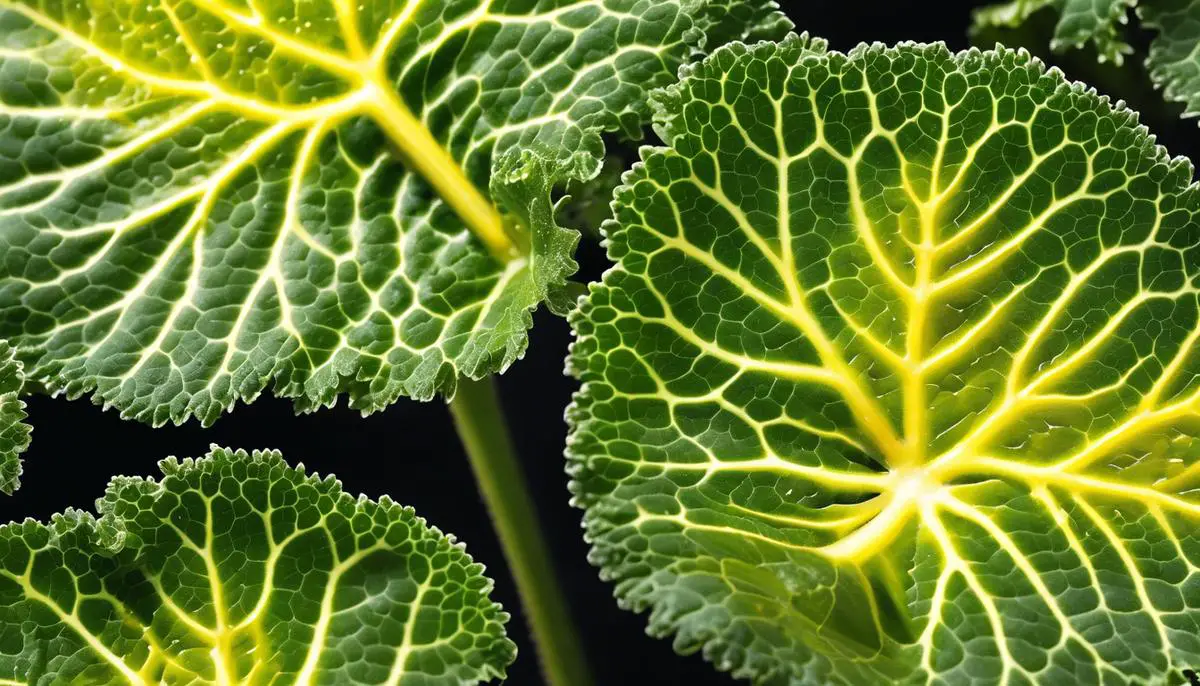
Kale Crop Rotation and Soil Health
Crop rotation, a long-standing agricultural practice, holds significant sway in maintaining soil health and modulating pest and disease pressure in kale and other brassicas. By alternating kale with non-host crops in successive planting seasons, the risk of buildup in soil-borne pathogens and insect pests, such as nematodes and certain beetle species that prefer brassicas, is mitigated. This practice disrupts the lifecycle of pests and diseases that specifically affect kale, reducing the population density and incidence in subsequent cycles. Moreover, when crops with dissimilar nutrient needs are cycled through the soil, the balanced extraction of soil resources helps avoid the depletion of any one mineral, consequently averting conditions that could lead to plant stress and increased vulnerability to diseases.
Soil health is an encompassing term that refers to the biological, chemical, and physical properties of soil that enable it to function as a vital living ecosystem. Prolific soil health supports complex microbial communities which compete with or directly antagonize plant pathogens. For instance, cultivating green manures or cover crops before planting kale can enhance soil organic matter and microbial diversity. This suppresses pathogenic agents through a phenomenon known as competitive exclusion and can foster the proliferation of beneficial arbuscular mycorrhizal fungi. These fungi establish symbiotic relationships with kale roots, thereby improving nutrient uptake and making plants more resilient against pests and diseases. Furthermore, incorporating organic matter into the soil can raise the levels of beneficial nematodes and predatory insects that prey on kale pests, establishing an intrinsic biological control system.
In conclusion, thoughtful implementation of crop rotation and the stewardship of soil health are paramount in creating a sustainable agroecosystem. These practices offer a strategic foundation for the integrated management of pests and diseases in kale cultivation, fortifying the crop against adversaries while preserving ecological balance and soil productivity. Through adherence to these principles, the incessant battle against kale pests and diseases can be tempered, securing yield and quality for future harvests.
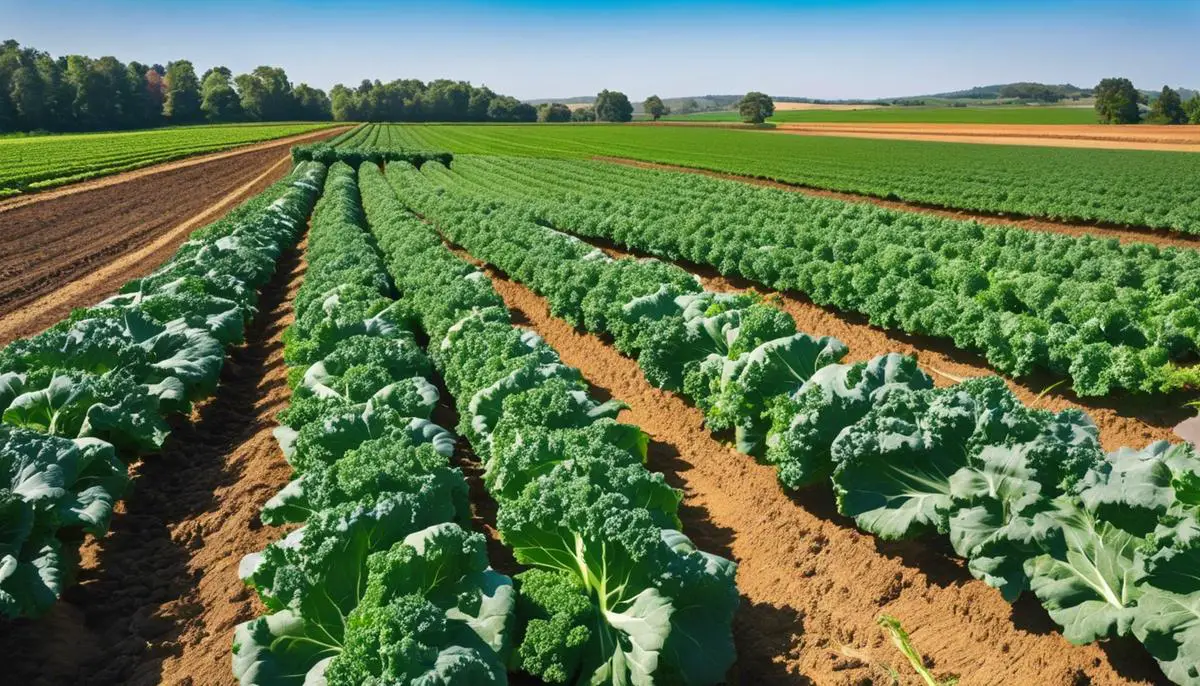
Understanding the complex interplay between kale and its common pests and diseases is crucial for maintaining a healthy and productive crop. While aphids, cabbage worms, and fungal pathogens each present unique challenges, integrated approaches to management can substantially reduce their negative impacts. Implementing biological controls, adopting smart cultural practices, and fostering robust soil health are all instrumental in fortifying kale against these threats. By embracing these strategies, growers can not only combat current infestations and infections but also build a stronger, more resilient foundation for future cultivation. As we continue to nurture our kale plants, let us remember that our efforts today pave the way for bountiful harvests and the enduring vitality of our gardens and farms tomorrow.

